Streamline your models to production with the Vertex AI Model Registry
Ivan Nardini
Developer Relations Engineer
Sarah Dugan
Technical Writer
Machine learning (ML) is iterative in nature -- model improvement is a necessity to drive the best business outcomes. Yet, with the proliferation of model artifacts, it can be difficult to ensure that only the best models make it into production.
Data science teams may get access to new training data, expand the scope of use cases, implement better model architectures, or simply make adjustments as the world around your models is constantly changing. All of these scenarios require building new versions of models to be released into production. And with the addition of new versions, it matters to be able to manage, compare, and organize them. Moreover, without a central place to manage your models at scale, it’s difficult to govern model deployment with appropriate gates on release and maintenance according to compliance to industry standards and regulations.
To address these challenges, today we are excited to announce the Global Availability (GA) launch of the Vertex AI Model Registry.
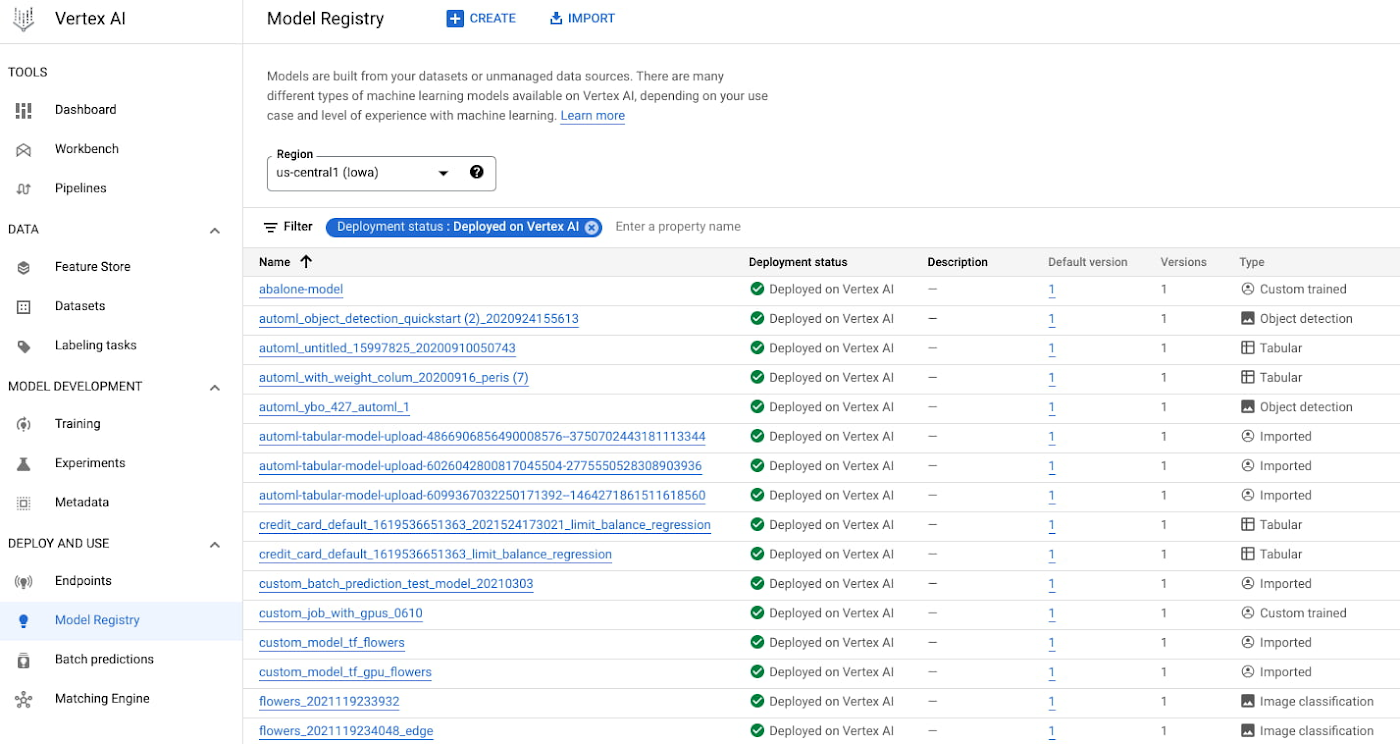

With the Vertex AI Model Registry, you have a central place to manage and govern the deployment of all of your models, including BigQuery, AutoML and custom models. You can use the Vertex AI Model Registry at no charge. The only cost that occurs when using the registry is if you deploy any of your models to endpoints or if you run a batch prediction.
Vertex AI Model Registry offers key benefits to build a streamlined MLOps process:
Version control and ML metadata tracking to guarantee reproducibility across different model versions over time.
Integrated model evaluation to validate and understand new models using evaluation and explainability metrics.
Simplified model validation to enhance model release.
Easy deployment to streamline models to production.
Unified model reporting to ensure model performance
Version control and ML metadata tracking to guarantee model reproducibility
Vertex AI Model Registry allows you to simplify model versioning and track all model metadata to guarantee reproducibility over time.
With the Vertex AI SDK, you can register custom models, all AutoML models (text, tabular, image, and video), and BQML models. You can also register models that you trained outside of Vertex AI by importing them to the registry.
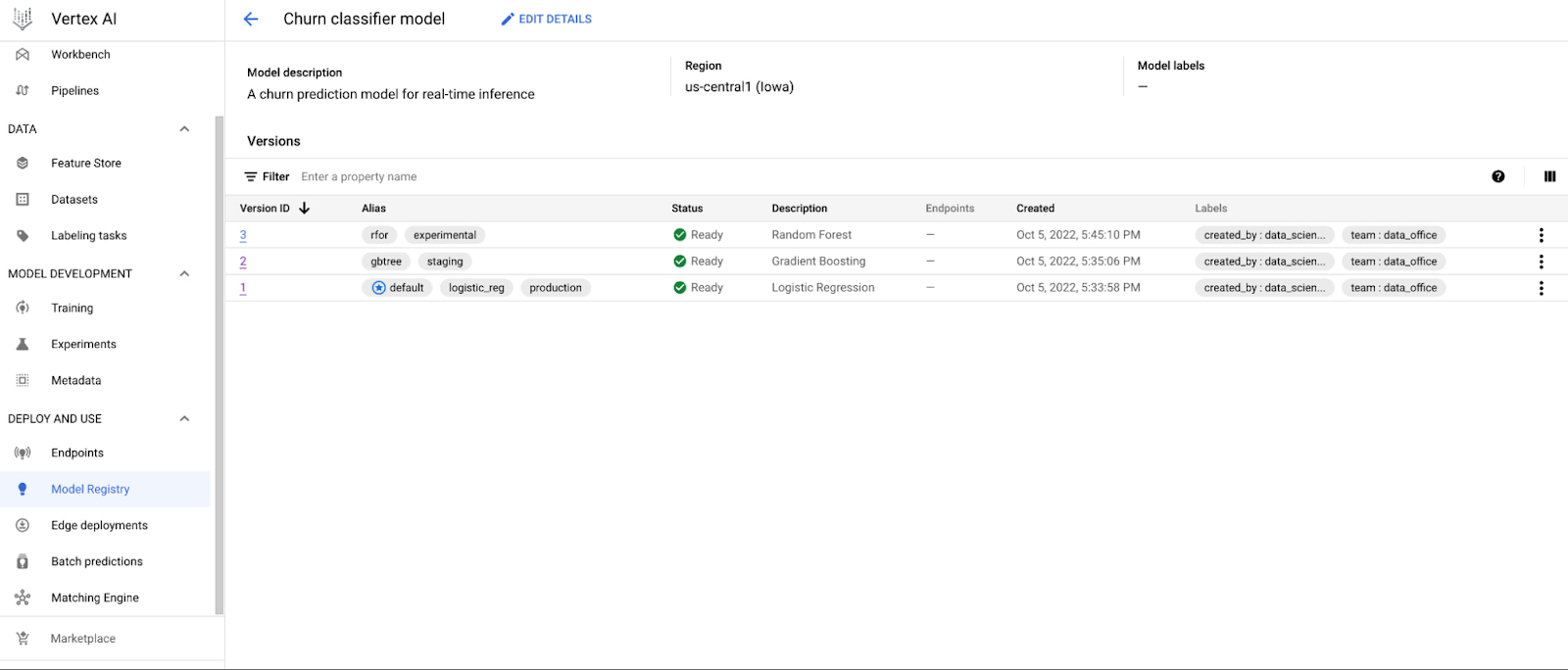

In Vertex AI Model Registry, you can organize, label, evaluate, and version models. The registry gives you a wealth of model information at your fingertips, such as model version description, model type, and model deployment status. You can also associate additional information such as the team who built a particular version or the application the model is serving.
In the end, you can get a single picture of your models and all of their versions using the Model Registry console. You can drill down and get all the information about a specific model and its associated versions so you can guarantee reproducibility across different model versions over time.
Integrated model evaluation to ensure model quality
Thanks to the integration with the new Vertex AI Model Evaluation service, you can now validate and understand your model versions using evaluation and explainability metrics. This integration allows you to quickly identify the best model version and audit the quality of the model before deploying it in production. For each model version, the Vertex AI Model Registry console shows classification, regression, and forecasting metrics depending on the type of model.
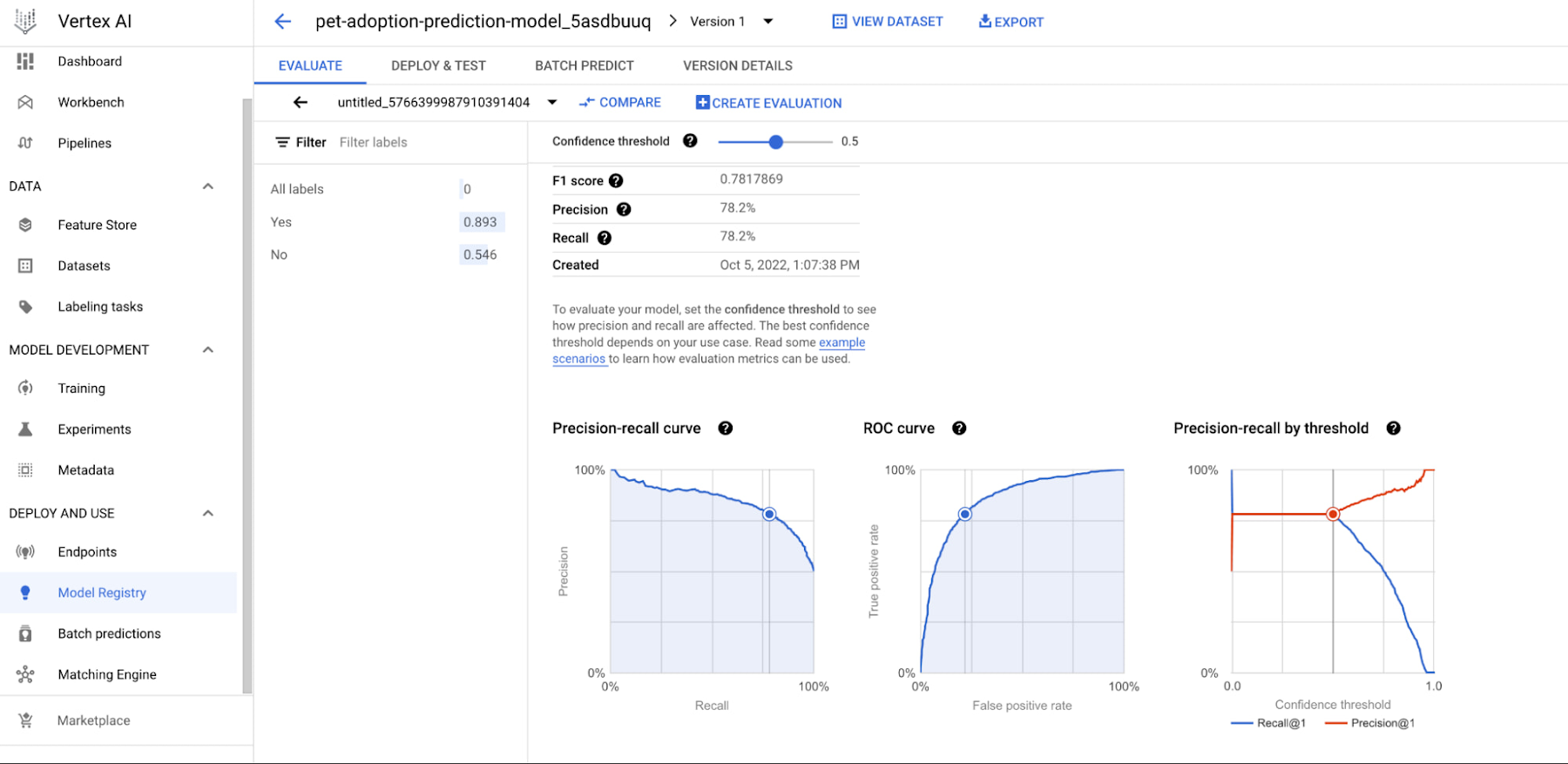

Simplified model validation to improve model release.
In an MLOps environment, automation is critical for ensuring that the correct model version is used consistently across all downstream systems. As you scale your deployments and expand the scope of your use cases, your team will need solid infrastructure for flagging that a particular model version is ready for production.
In Vertex AI Model Registry, aliases are uniquely named references to a specific model version. When you register a new model, the first version automatically gets assigned the default alias. Then you can create and assign custom aliases to your models depending on how you decide to organize your model lifecycle.
An example of model alias usage would be assigning the stage of the reviewing process (not started, in progress, under review, approved) or the status of the model life cycle (experimental, staging, or production).
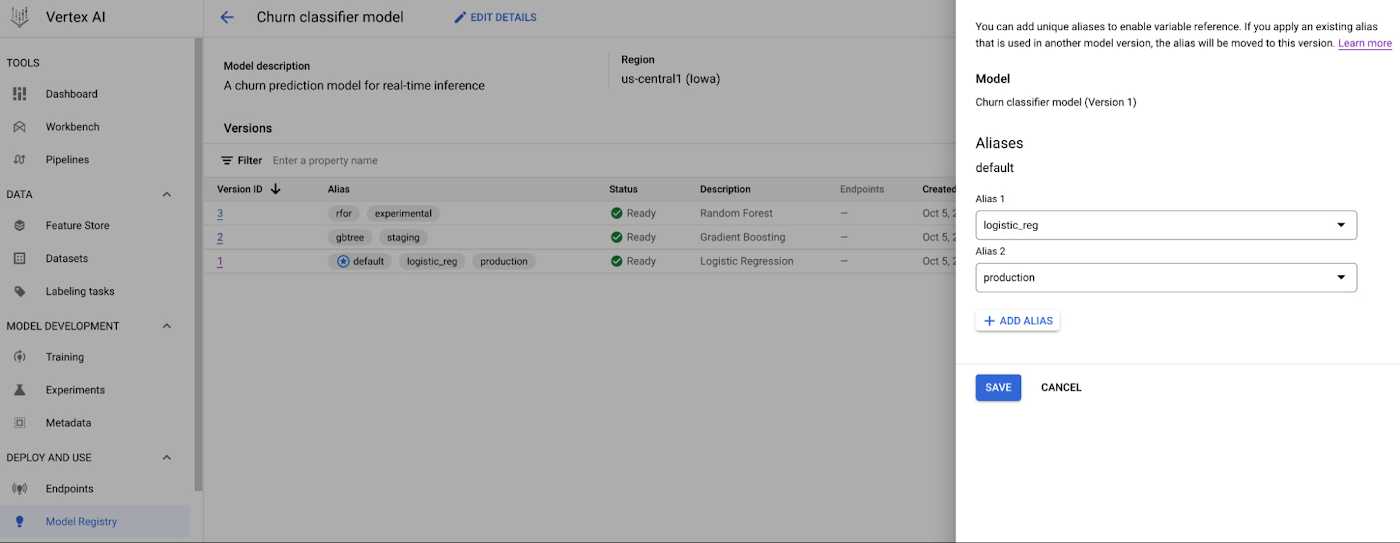

In this way, the Model Registry simplifies the entire model validation process by making it easy for downstream services, such as model deployment pipelines or model serving infrastructure, to automatically fetch the right model.
Easy deployment to streamline models to production
After a model has been trained, registered, and validated, the model is ready to be deployed. With Vertex AI Model Registry, you can easily productionalize all of your models (BigQuery models included) with point-and-click model deployment thanks to the integration with Vertex AI Endpoints and Vertex AI Batch Predictions.
In the Vertex AI Model Registry console, you select the approved model version, you define the endpoint and you specify some model deployment and model monitoring settings. Then you deploy the model. After the model has been successfully deployed, you can see that the model status is automatically updated in the models view and it is ready to generate both online and batch predictions.
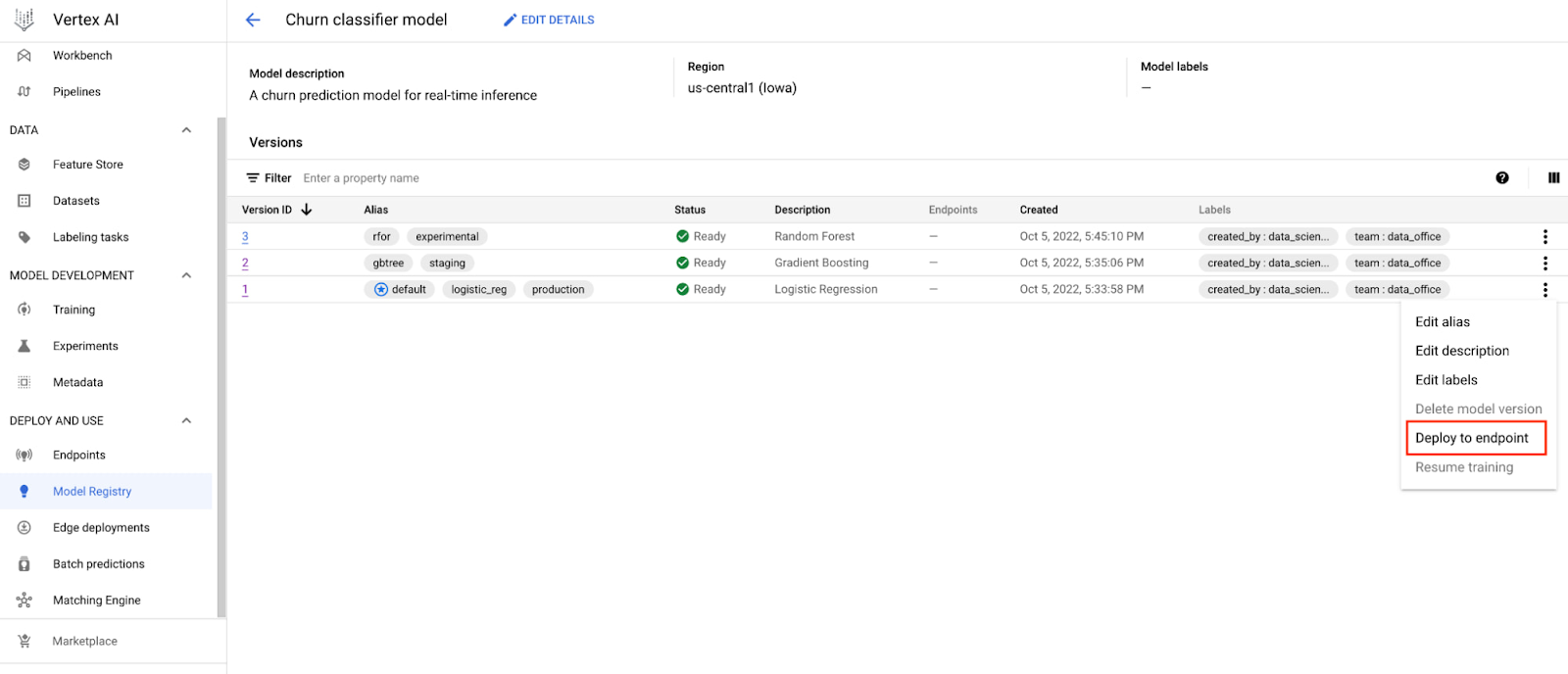

Unified model reporting to ensure model performance
A deployed model keeps performing if the input data remains similar to the training data. But realistically, data changes over time and the model performance degrades. This is why model retraining is so important. Typically, models are retrained at regular intervals, but ideally models should be continuously evaluated with new data before making any retraining decisions.
With the integration of Vertex AI Model Evaluation, now in preview, after you deploy your model, you define a test dataset and an evaluation configuration as inputs. In turn, it returns model performance and fairness metrics directly in the Vertex AI Model Registry console.
Looking at those metrics you can determine when the model needs to be retrained based on the data you record in production. These are important capabilities for model governance, ensuring that only the freshest, most accurate models are used to drive your business forward.
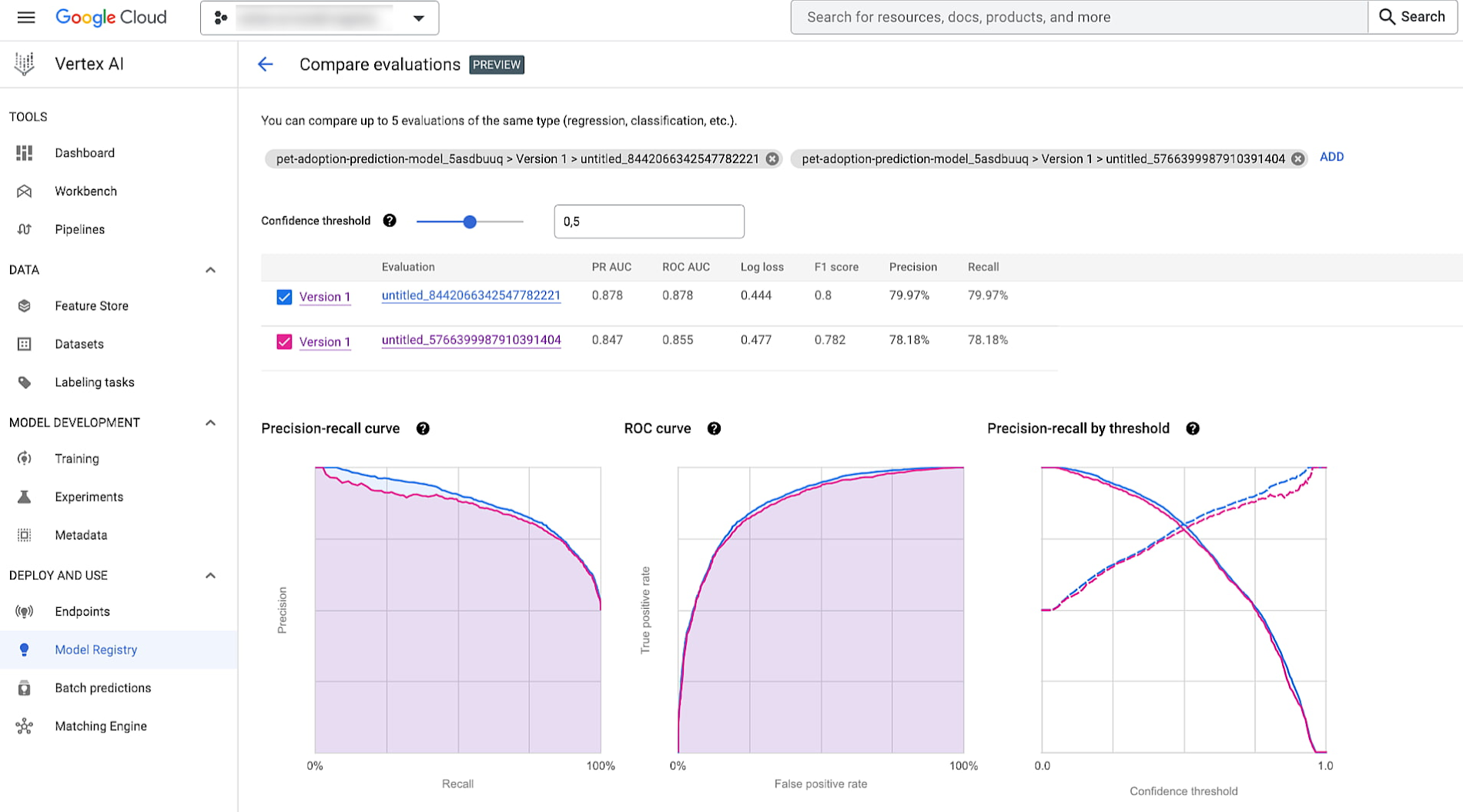

Conclusion
The Vertex AI Model Registry is a step forward for model management in Vertex AI. It provides a seamless user interface which shows you all of the models that matter most to you free of charge, and at-a-glance metadata to help you make business decisions.
In addition to a central repository where you can manage the lifecycle of your ML models, it introduces new ways to work with models you’ve trained outside of Vertex AI, like your BQML models. It also provides model comparison functionality via the integration with our Model Evaluation service, which makes it easy to ensure that only the best and freshest models are deployed. Additionally, this one stop view improves governance and communication across all stakeholders involved in the model training and deployment process.
With all these benefits of the Vertex AI Model Registry, you can confidently move your best models to production faster.
Want to learn more?
To learn more about the Vertex AI Model Registry, please visit our other resources:
Want to dive right in? Check out some of our Notebooks, where you can get hands-on practice:
Get started with Model Governance with Vertex AI Model Registry
Deploy BigQuery ML Model on Vertex AI Model Registry and Make Predictions
Special thanks to Ethan Bao, Shangjie Chen, Marton Balint, Phani Kolli, Andrew Ferlitch, Katie O’Leary, and all the Vertex AI Model Registry team for support and great feedback.



